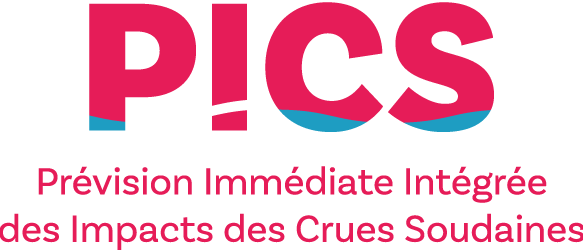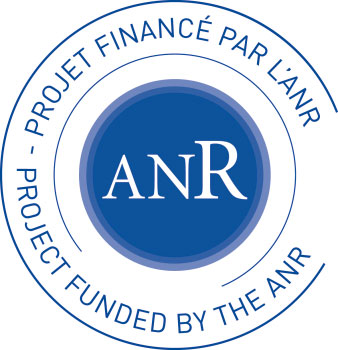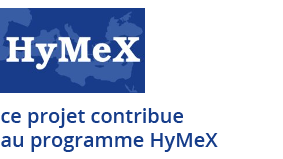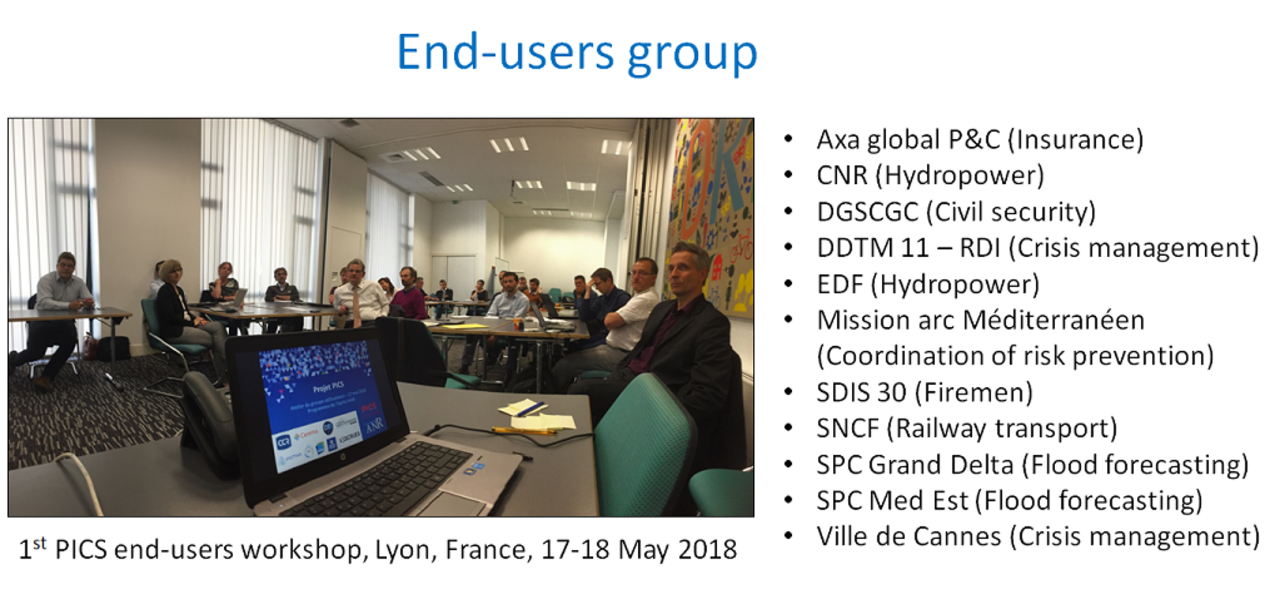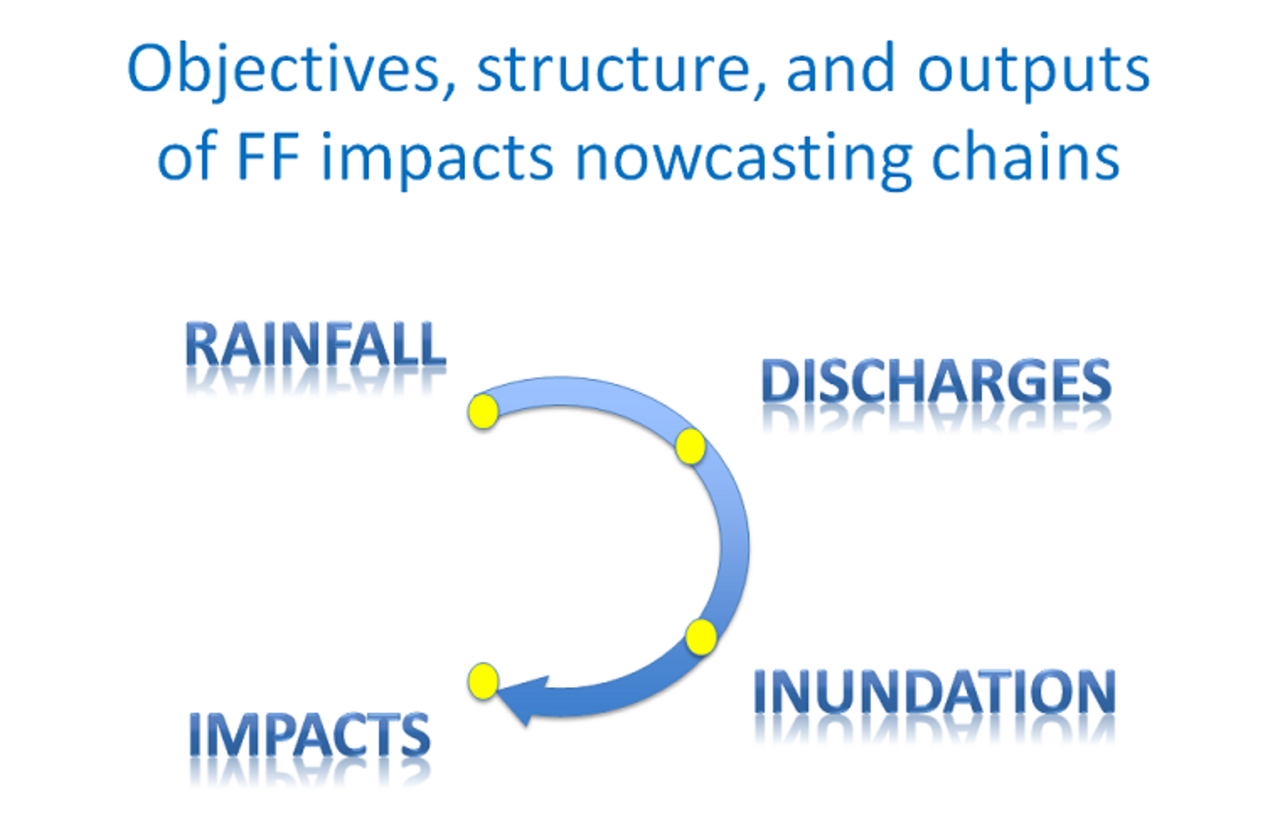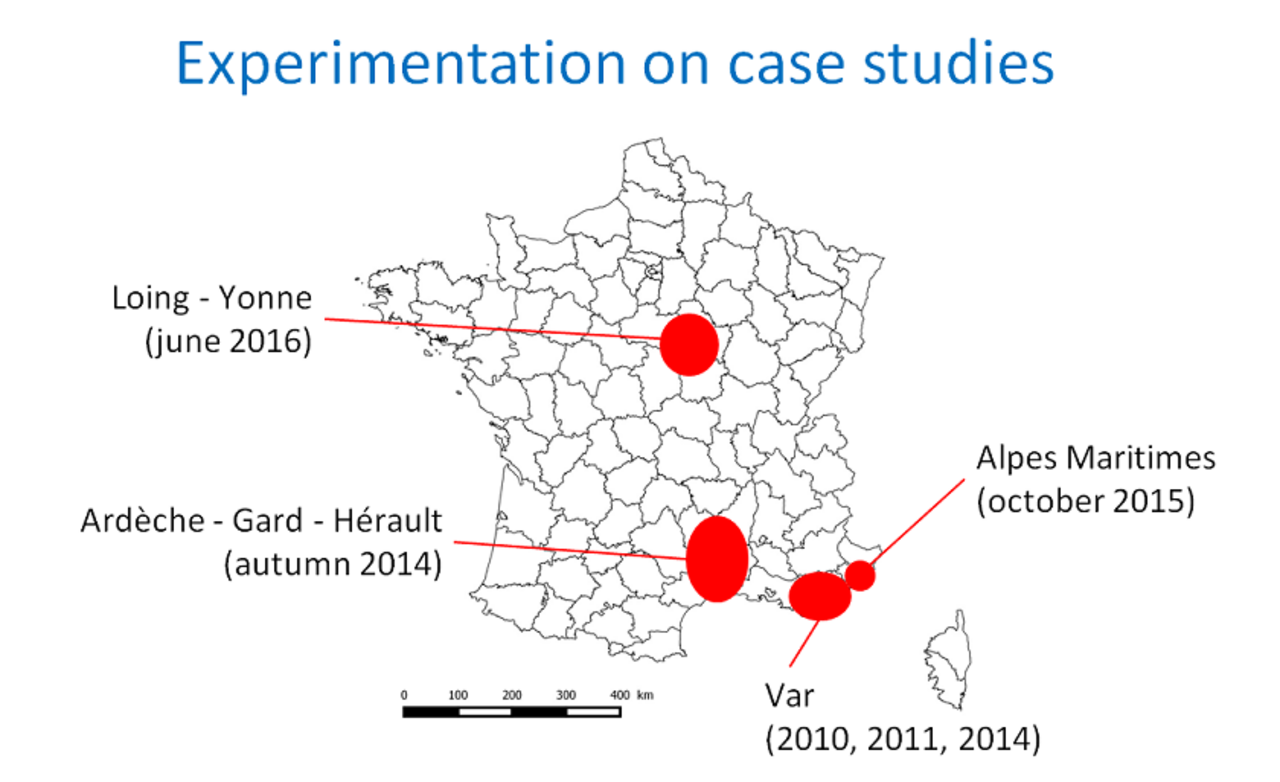Another task includes the definition and documentation of the most interesting events to be used for the evaluation. The SCHAPI, which is running the national ‘Vigicrues-Flash’ warning service, will help to identify relevant events, based on the feedbacks received from local actors. A strong effort will be put on the collection of data enabling to assess the performances of all components of the forecasting chains: peak discharges (obtained if necessary from post event surveys), extent of observed flooded areas, and also all kind of useful information for the characterization of impacts (submersion of roads, habitations, etc) and of their timing. This last information will be collected through public data, such as social network or medias, and also based on the contribution of end users group and local authorities. This information will be complemented if necessary by field surveys.
The last task aims at implementing, running, and evaluating the integrated forecasting chains for the selected events and case studies. The warnings of the ‘Vigicrues-Flash’ system will be used as benchmarks for the evaluation. The main questions addressed here will be the following: which accuracy of the forecasts? which critical components in terms of uncertainty? which capacity to fulfil the end user’s needs? These questions will be addressed based on common workshops involving the project partners and end users group.
